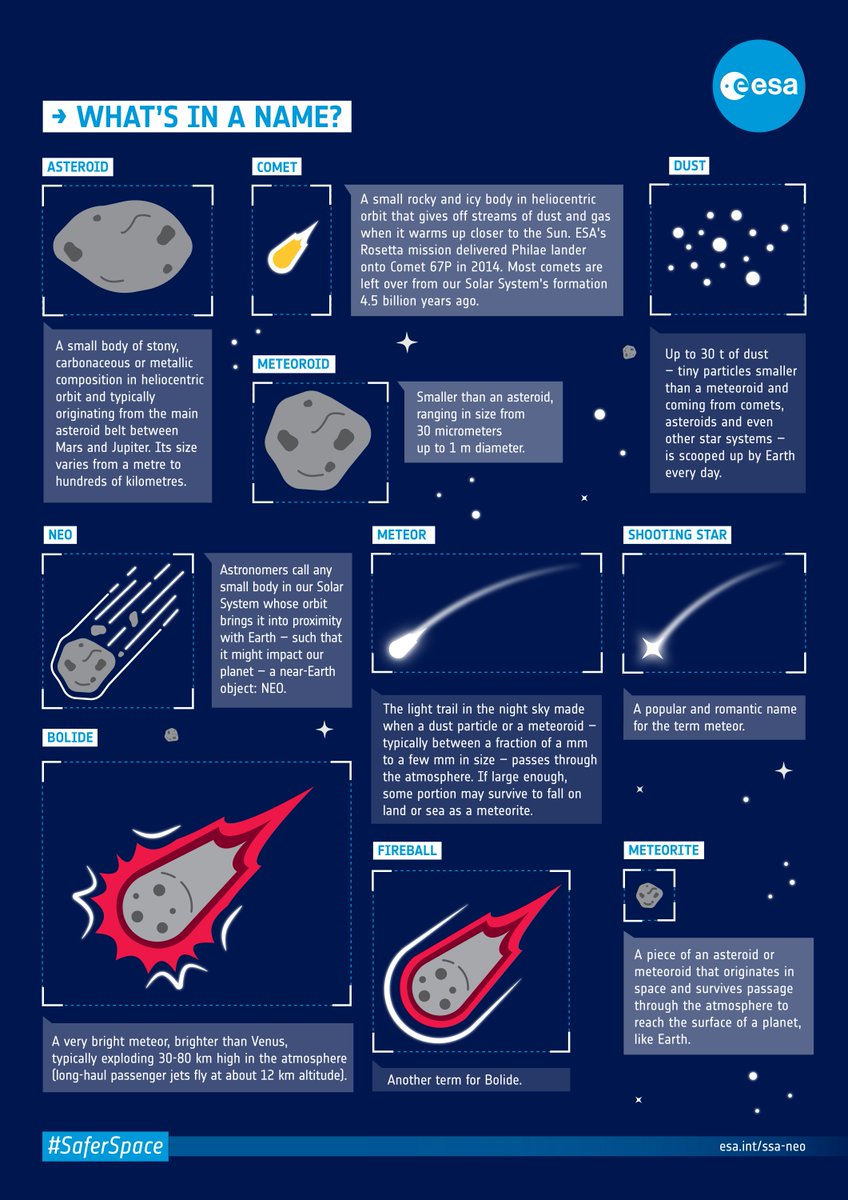

A meteoroid is a small rock or particle of debris in our solar system. Asteroids are similar to comets but do not have a visible coma (fuzzy outline and tail) like comets do. Made of rock and metal, they can also contain organic compounds. Asteroids are small solar system bodies that orbit the Sun. When close enough to the Sun they display a visible coma (a fuzzy outline or atmosphere due to solar radiation) and sometimes a tail. A comet is a relatively small solar system body that orbits the Sun. To learn more about objects in space and how they work, look over the links on the next page.Although there can sometimes be a blurry line between categories the following definitions should help you understand the difference between comets and asteroids, why Halley’s Comet is not a meteorite and more. You can actually find and collect tiny meteorites that have made it through the Earth's atmosphere with a simple experiment - Put a pan on your back porch or deck to catch them! The meteorites a person is likely to find on the ground probably came from significantly larger meteoroids - pieces of debris at least the size of a basketball, typically, since larger meteoroids usually break up into smaller chunks as they travel through the atmosphere. Smaller particles burn up in the atmosphere about 50 to 75 miles (80 to 120 kilometers) above the Earth. Typically, though, a meteoroid would have to be about the size of a marble for a portion of it to reach the Earth's surface. Most notably, a meteoroid's entry speed affects its chances of reaching the surface, because it determines the amount of friction the meteoroid experiences. This is because there are factors other than size involved. In this sense, most all meteoroids that enter the atmosphere make it to the ground, in the form of microscopic dust.Īs for meteoroids big enough to form visible meteors, estimates for the minimum size vary. Moving about 1 inch (2.5 centimeters) per second through the atmosphere, they don't experience the intense friction that larger meteoroids do. They don't get vaporized because they are light enough that they slow down very easily. So how big does a meteoroid have to be to make it to the surface of the Earth? Surprisingly, most of the meteoroids that reach the ground are especially small - from microscopic debris to dust-particle-size pieces. 
The friction breaks the molecules of both the meteoroid material and the atmosphere into glowing ionized particles, which then recombine, releasing light energy to form a bright "tail." A meteor tail caused by a grain-sized meteoroid is a few feet wide (about a meter) but, because of the high speed of the debris, may be many miles long. This friction generates enough heat (up to 3,000 degrees Fahrenheit, or 1,649 degrees Celsius) to raise the meteoroid's surface to its boiling point, so the meteoroid is vaporized, layer by layer.
METEOR VS METEORITE FULL
Earth's atmosphere, on the other hand, is full of matter, which creates a great deal of friction on a traveling object. They can travel at this rate very easily in the vacuum of space because there's nothing to stop them. Meteoroids enter the atmosphere at extremely high speeds - 7 to 45 miles per second (11 to 72 kilometers per second).

So how can we see a meteor caused by such a small bit of matter? It turns out that what these meteoroids lack in mass they make up for in speed, and this is what causes the flash of light in the sky. This dust tends to be made up of small particles. But most of the debris the Earth comes in contact with is "dust" shed by comets traveling through the solar system. They include any space debris bigger than a molecule and smaller than about 330 feet (100 meters) - space debris bigger than this is considered an asteroid.







 0 kommentar(er)
0 kommentar(er)
